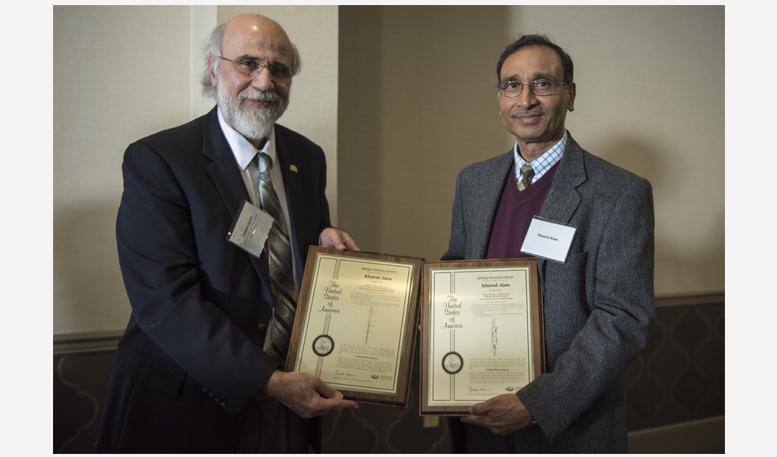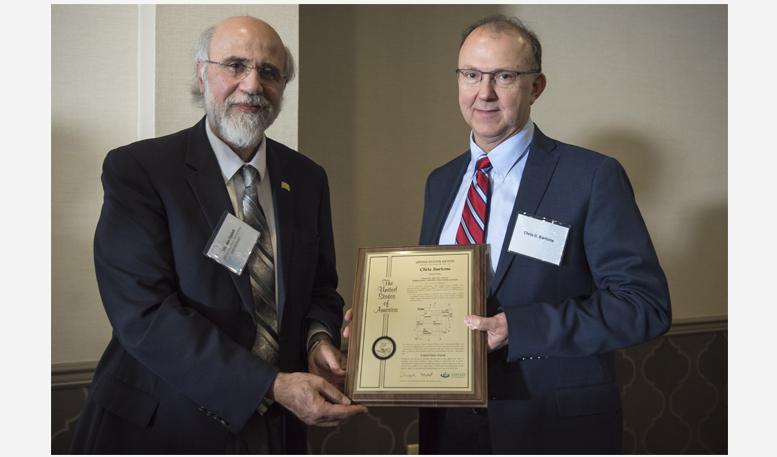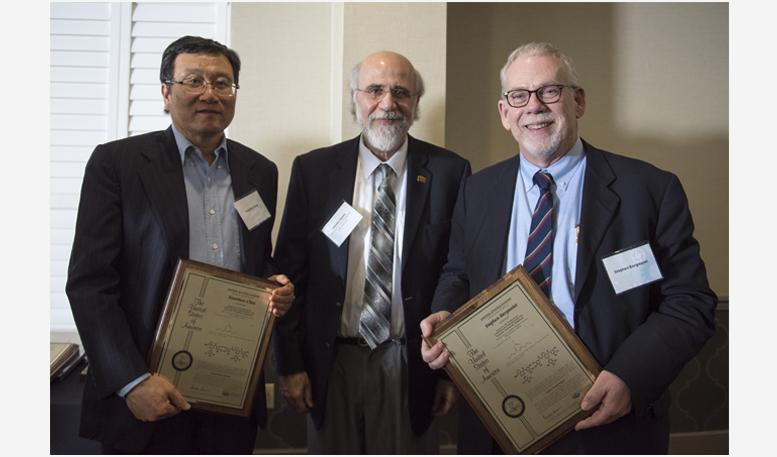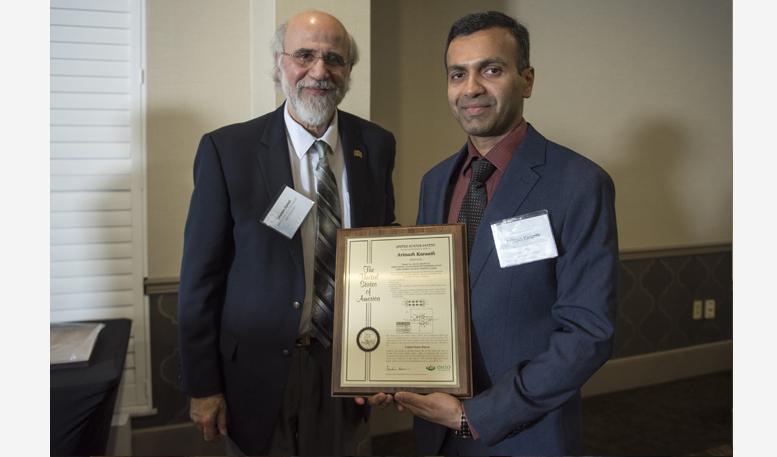Ohio University recognizes the faculty, staff and student inventors of 2018
Ohio University honored faculty, staff and student inventors during an awards ceremony Feb. 21. The Inventors Dinner recognized individuals who engaged with the university’s Technology Transfer Office over the past year to commercialize their research findings, by protecting their intellectual property through the patent process.
Ohio University has a successful track record in commercializing technologies. Ohio University has a portfolio of 94 active issued U.S. patents and 174 active issued non-U.S. patents. The university received more than $100 million in royalty income from research licenses between fiscal year 2004 and 2019 to date.
Ohio University received the following U.S. patents for inventions in 2018:
Khairul Alam, Russ College of Engineering and Technology
“Carbon Fiber Composite Discharge Electrode with Mechanical Bias”
This patent is for a discharge electrode for an electrostatic precipitator that uses carbon fiber composite material in the form of a tape or ribbon. It is stretched taut by coil springs across the pathway of an airflow contaminated with particulates, like dust and smoke. This design maintains the necessary charge required for effective electrostatic filtration at a lower cost.
“Discharge Electrode Suspension System Using Rings”
This patent is for a composite discharge electrode for electrostatic precipitators composed of carbon fibers within a matrix material shaped in the form of a loop. The loop is stretched around fixed rings in the pathway of an airflow contaminated with particulates, like dust and smoke. The use of rings and the composite electrode offer a lighter, less expensive solution to traditional metal electrodes.
Chris G. Bartone, Russ College of Engineering and Technology
“Terrestrial Positioning and Timing System”
This patent is for a terrestrial-based positioning and timing system that allows GPS functionality not from satellites, but from ground-based stations. The TPTS could serve as a backup to GPS should that system fail or receive interference.
Stephen Bergmeier, College of Arts and Sciences, and Xiaozhuo Chen, Heritage College of Osteopathic Medicine
“Compositions and Methods for Glucose Transport Inhibition”
This composition of matter patent covers novel anticancer compounds that inhibit basal glucose transport, resulting in tumor suppression and new methods for the study of glucose deprivation in cancer research.
Douglas Goetz, Russ College of Engineering and Technology, Stephen Bergmeier and Mark McMills, College of Arts and Sciences
“Imidazole and Thiazole Compositions for Modifying Biological Signaling”
This patent covers new compounds that may be used in pharmaceutical compositions that modify various biological signaling processes or as reagents for biological assays. Among other things, these compounds may be therapeutically useful for the prevention and treatment of non-alcoholic fatty liver disease and to modify GSK-3 activity in the body.
Avinash Karanth, Russ College of Engineering and Technology
“Directional Allocation of Communication Links Based on Data Traffic”
Network on Chip (NoC) architecture was developed to improve communication in modern integrated circuits. This new patented design, called QORE, seeks to reduce power consumption and improve performance of NoCs while mitigating errors caused by faults.
David Bayless, Russ College of Engineering and Technology
“Method and System for Enhancing the Mass Transfer Rate of a Soluble Gas”
This system and method improves the rate at which gases dissolve into fluids. Although this patent covers gases and fluids broadly, an original intent was to dissolve carbon dioxide into water for enriching algal growth media.
Jason Trembly, Russ College of Engineering and Technology
“Technique for Removal of Organics and Dissolved Solids from Aqueous Media via Supercritical Treatment”
This technique uses a super critical water reactor to treat contaminated water discharged from oil and gas wells following hydraulic fracturing.
In addition, Ohio University honored faculty, students and staff who disclosed inventions and for whom the university filed patents. Invention disclosure is the first step in the technology commercialization process. Technology Transfer Office staff review these disclosures to determine if the intellectual property can be patented and licensed for commercial use. If so, the office files for domestic and foreign patent protection as appropriate, and works with inventors to identify licensing opportunities that can develop the technologies into useful products for the marketplace.
In addition, the Technology Transfer Office works closely with the university’s high-tech business incubator, the Innovation Center, and its state-sponsored Entrepreneurial Services Provider program, TechGROWTH Ohio, to connect inventors to business coaches and sources of seed funding that can help them launch startup companies if appropriate.
For more information about the Ohio University Technology Transfer Office, visit www.ohio.edu/research/tto.





